#880 Celebrate the orca
Spirits of the Coast: Orcas in Science, Art and History
by Martha Black, Lorne Hammond, and Gavin Hanke (editors), with Nikki Sanchez
Victoria: Royal British Columbia Museum Press, 2020
$29.95 / 9780772677686
Reviewed by Daniel Francis
*
 During the summer of 2018 an orca named Tahlequah, a member of J pod of the southern resident orcas which inhabit coastal British Columbia and neighbouring Washington State, gave birth to a female calf. The calf soon died and for the next seventeen days the grieving Tahlequah kept the body of her dead child afloat on the surface, carrying it on her rostrum as she negotiated a funeral passage around the Salish Sea. This display of what appeared to be grief and mourning by a “wild animal” attracted enormous attention from world media. Day by day compassionate, perhaps guilty, observers bore witness to the agony of the bereaved parent.
During the summer of 2018 an orca named Tahlequah, a member of J pod of the southern resident orcas which inhabit coastal British Columbia and neighbouring Washington State, gave birth to a female calf. The calf soon died and for the next seventeen days the grieving Tahlequah kept the body of her dead child afloat on the surface, carrying it on her rostrum as she negotiated a funeral passage around the Salish Sea. This display of what appeared to be grief and mourning by a “wild animal” attracted enormous attention from world media. Day by day compassionate, perhaps guilty, observers bore witness to the agony of the bereaved parent.
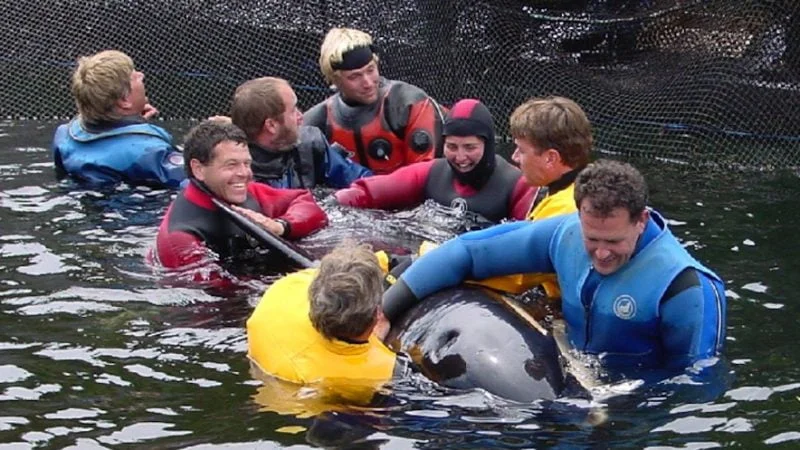
This was hardly the first time that the eyes of the world have focussed on coastal orcas. In 2002 scientists successfully reunited a young calf named Springer with her natal family. Springer had been discovered swimming alone in the waters off Seattle. Fearing for her survival, researchers from Canada and the US cooperated to identify, capture and then relocate Springer back in Johnstone Strait. It was the first time that such a family reunion had been attempted and once again media coverage was extensive. A fleet of satellite trucks and an army of reporters covered the entire episode. Hoping to replicate this feel-good story, scientists prepared to relocate a second “orphan” orca, Luna, from Nootka Sound on the west coast of Vancouver Island in 2004. On this occasion local Indigenous people did not see eye to eye with government plans. The attempt to capture Luna was abandoned in full view of the cameras and two years later the orca died in a tragic accident.
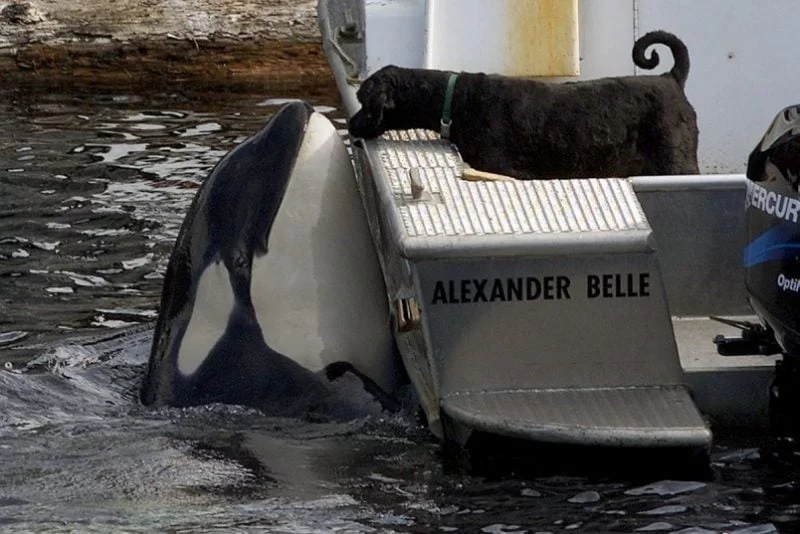
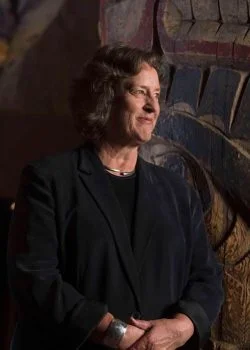
In fact public fascination with the coastal orcas goes all the way back to 1964 and the first successful capture by an aquarium of an orca in the wild. Until that time it was taken for granted that orcas were vicious, man-eating predators, impossible to keep in captivity. Then the Vancouver Aquarium, quite by accident, obtained a live specimen and began the long process of discovering just how little we knew about these fascinating animals. Unhappily, Moby Doll, as the Aquarium’s first orca was called, died after less than three months in an enclosure but his impact on public and scientific perceptions was profound. Within a few years orca went from being monsters of the deep to gentle, intelligent, even cuddly creatures, if a five-tonne predator with a mouth full of sharp teeth can ever be considered cuddly. Moby Doll initiated a frenzy of live capture on the Pacific Coast as aquariums and marine parks around the world competed to obtain an orca for display. He also initiated a period of enormous discovery as marine scientists learned how to study the animals and began to understand something about their population dynamics, social structure, “language” and behaviour.
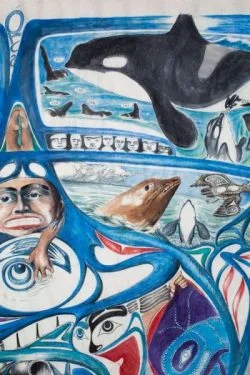
The transformation of our attitudes toward coastal whales is one of the stories told in this new book from the Royal British Columbia Museum. Spirits of the Coast: Orcas in Science, Art and History was intended to accompany a museum exhibition scheduled for this year. The exhibit has been rescheduled to the spring of 2021, but the book stands alone as a useful progress report on the state of BC’s most iconic marine mammal. It contains essays and art work by many contributors, Indigenous and non-Indigenous, from many backgrounds: poets, scientists, storytellers, photographers, historians, painters, carvers and naturalists. Anyone looking for an introduction to the history, science and cultural significance of the orca could do no better than to start here.
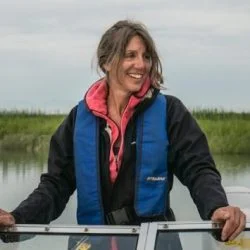
BC’s orca population is divided into several different groups, some of them healthier than others. Recently most attention has focused on Tahlequah’s group, the southern residents, because they are most as risk. As biologist Misty MacDuffee points out in her contribution to the book, it was not that long ago that the number of southern residents was actually rising. But a combination of factors – a declining food supply, increased underwater noise from vessel traffic and the ingestion of environmental toxins among them — has put these animals in danger of dying out completely. It is this imminent threat that gives the book its underlying sense of urgency. Yet all is not necessarily lost. Can they recover? MacDuffee answers her own question with a qualified Yes, but only if immediate steps are taken to increase the food supply and decrease the noise levels associated with ship traffic on the south coast. “Ensuring the survival of these whales in the Salish Sea isn’t about managing the ocean,” she writes, “it’s about managing humans.” The orca require us “not just to see their plight and empathize, but to listen, and to act.” Otherwise the public mourning for Tahlequah’s calf may turn out to be the death knell for an entire population.
But I don’t want to give a false impression. Despite its dire warnings, Spirits of the Coast is a celebration of the orca, not a lament. It is impossible to read its essays, and to view its handsome illustrations, without recognizing that these are remarkable animals with whom we are privileged to share an environment and that we have a responsibility to do what we can to shield them from our own worst impulses. They are often seen as symbols, but symbols of what: renewal and stewardship, or environmental collapse? This is ultimately the question posed by Spirits of the Coast.
*
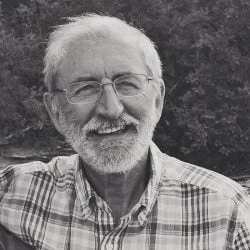
Daniel Francis is a historical writer, the author of thirty books, including three about whales and whaling. His most recent book, a history of the City of Vancouver, will appear in 2021. Editor’s note: Daniel Francis has also reviewed books by Peter Neary & Alan Collier, Ben Bradley, and Mark Leiren-Young. He lives in North Vancouver. Visit his website here.
*
The Ormsby Review. More Books. More Reviews. More Often.
Publisher and Editor: Richard Mackie
The Ormsby Review is a journal service for in-depth coverage of B.C. books and authors. The Advisory Board consists of Jean Barman, Robin Fisher, Cole Harris, Wade Davis, Hugh Johnston, Patricia Roy, David Stouck, and Graeme Wynn. Scholarly Patron: SFU Graduate Liberal Studies. Honorary Patron: Yosef Wosk. Provincial Government Patron since September 2018: Creative BC
“Only connect.” – E.M. Forster
3 comments on “#880 Celebrate the orca”